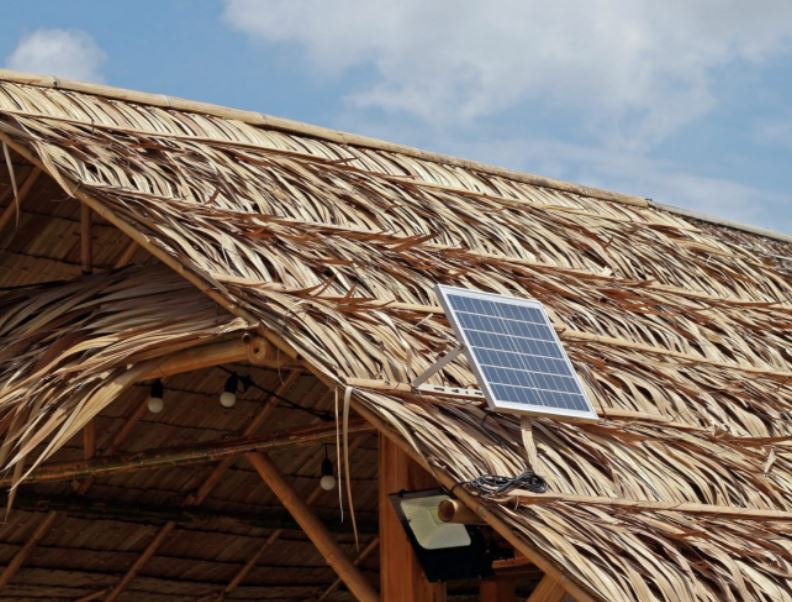1. Why D-RECs? Weren’t carbon credits meant to serve the same purpose for corporates?
Furthermore, D-RECs actually target *Scope 2* emissions reductions, where carbon credits function as offsets / compensation.
Finally, where carbon credits are mostly a corporate concern, the purpose of D-RECs is balanced between corporate concerns and global energy equality concerns, introducing a high social impact along with the climate impact.
2. What is the potential you see for the D-REC market globally? Explain the marketplace for D-Recs you speak of.
As emissions disclosure rules get stricter, we expect businesses to demand more from their investments in Energy Attribute Certificates (EACs).
We see more and more that corporates’ commitments to run their operations on 100% renewable energy are often accompanied with the desire to accelerate the energy transition – especially in emerging markets where the electricity emission factor is extreme (because primarily fuelled with fossil energy). The D-REC instrument offers a simple, scalable and robust means for companies to support precisely that: accelerating the deployment of new renewable energy systems where they have the greatest socioeconomic and environmental impact.
As such, D-RECs have the potential to become the most popular corporate RE procurement instrument in the global South.
3. Could D-RECs drive adoption of solar in places where they haven’t made a meaningful impact yet, despite high potential? COuntries like Pakistan, for instance?
Part of the initiative is to deliver RE to places where there is great potential but inadequate funding to build the infrastructure – the sale of D-RECs will generate the necessary finances, and attract further investments – to carry out these plans.
4. Could you share specific examples of cases where the certification has helped support energy access? Are you going to be focused on specific regions?

 In 2022, Off-Grid Solar developer, Alina Enerji, was looking to increase the number of households in Dulagon, Haiti, supplied by micro-grid solar initially from 35 to 335, and then an additional 700 households thereafter.
In 2022, Off-Grid Solar developer, Alina Enerji, was looking to increase the number of households in Dulagon, Haiti, supplied by micro-grid solar initially from 35 to 335, and then an additional 700 households thereafter.
While there existed some grant and debt financing for the project, both sources of income were unable to reach the critical mass required to bring the project to fruition.
Without a source of additional capital, the project would be unable to be completed, leaving an isolated community relying on intermittent fossil fuel power.
WHERE D-REC MADE A DIFFERENCE
D-REC had been in partnership with micro grid solar equipment and installation business, Okra, since its inception. Together, both parties recognised that Okra’s mesh grid technology for solar would ideally support the addition of AI technology to verify and aggregate generation data from individual households.
In the case of the Dulagon project, D-REC and Okra worked with Alina Enerji to design an electrification project that would generate verifiable power that could be certified at a distributed level. By creating an issuing advanced D-RECs, and subsequently selling these certificates to a third party buyer, low carbon company, South Pole, the revenue from the sale was able to provide enough capital investment to meet the shortfall needed to develop the project, and connect the additional 1000 households.
5. How are you working to get around the risk of fraud and misrepresentation, that has dogged REC and the carbon credits regime to an extent?
Though evolving from RECs, D-RECs are the product of understanding the limitations of previous models, and implementing corrections to make them more credible and transparent than their predecessors.
For instance, the D-REC leverages developments in digitalisation to allow a fast and powerful way of monitoring data remotely, alongside smart verification and swift transaction at minimal operational cost. Transparency and immutability of the data is guaranteed as the D-REC builds on a specific distributed ledger technology – the Energy Web Chain.
One of the traditional criticisms of RECs is that they do not actually contribute to the energy transition, especially if they stem from decade-old, long-amortised installations. D-RECs, however, provide proof of materiality, meaning that the revenues that result from a D-REC transaction contribute meaningfully to a project’s financial viability, and, thus, affects the end beneficiaries directly by improving the affordability, reliability and mere availability of clean energy.
6. Do you have a specific $ figure in mind in terms of enabling projects, or impact? Short term and long term targets?
We have strong ambitions to channel $10m of D-REC revenues directly to DRE projects by the end of 2024. We also aim to secure multi-contracts for a further $50m in this timeframe.
7. Does the initiative offer opportunities to other NGOs , individuals or orgs to connect with it in some way? How big a network do you see this becoming?
Yes.
– We can work with NGOs to support the monitoring of qualitative impact claims.
– We can work with industry associations to promote the D-REC instrument to their members, both for the producer (RE project developers, distributors, operators, monitoring solutions providers) and for buyers (companies who want to address their Scope 2 emissions via D-REC)
– We can also work with results-based finance stakeholders.
8. How can the D-REC initiative become sustainable for itself? How are D-Recs going to be valued? What’s a fair value? Will you set a floor or ceiling?
We envisage that the D-REC instrument will scale and constantly evolve in order to adapt and respond to market needs. This development, along with the maintenance of the instrument, will be financed through a mix of transaction fees and operation grants.
Regarding the valuation of the D-REC, this is very project-specific. The price is always determined by the impact that one aims to achieve in a specific project. The impact could be the financing the completion of a mini grid project, the securing of OPEX costs, the addition of a public good such as communal lighting in an off-grid community, or the lowering of a tariff that allows lowest income households to afford a solar home system.
Our economic models have shown that the needed finance for such impacts ranges between $10-40/MWH depending on project details. Ultimately, the market will determine the unit price. Past transactions have, however, taken place within a price bracket of $15-35/MWH.
9. What was the inspiration behind D-RECs? Do you believe the carbon trading market has limitations?
We were inspired by companies that sought to procure their renewable energy attributes from projects with high social and environmental impacts. It was clear to us that the highest impact per kWh is to be found in smaller RE assets: mini grids, mesh grids, solar home systems, and productive C&I scale installations.



